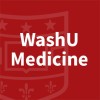
Randomized Control Trial of Family-Based HIV Prevention for Latinos
HIVSexually Transmitted InfectionsThe proposed project will test an HIV prevention intervention for Latino parent-adolescents dyads. This randomized controlled trial will: Recruit and randomize 320 parent-adolescent dyads into a Latino family-based HIV prevention intervention or a family-based General Health Promotion condition. Determine the efficacy of the Latino Family-based HIV prevention intervention from assessment of changes in HIV-related sexual behavior and attitudes over 18 months among a sample of 320 Latino parent-adolescent dyads. Determine the efficacy of the Latino Family-based HIV prevention intervention from assessment of changes in family relationships and parental monitoring/supervision over 18 months among a sample of 320 Latino parent-adolescent dyads. Examine the association of other important constructs, such as religiosity, acculturation, cultural values, and sexual socialization with the primary outcomes. Based on a thorough review of the literature and preliminary data from a recent, small pilot study, the investigators hypotheses are: Compared to the General Health Promotion Control condition, the Family-Based HIV Prevention intervention will result in greater change with regard to primary outcome measures of safer sexual behavior (recent sexual activity, the number of unprotected sex acts, and intentions to use condoms) and safer HIV-related attitudes. Compared to the General Health Promotion Control condition, the Family-Based HIV Prevention intervention will result in greater change with regard to family relationships and parental monitoring/supervision through improved parent-child communication skills and they will mediate the intervention impact. Religiosity, acculturation, cultural values, and sexual socialization will have meaningful associations with the primary outcomes and will act as moderators of intervention impact.

Men Together Making a Difference: Reducing HIV/STD Risk Behavior Among South African Men
Human Immunodeficiency Virus InfectionSexually Transmitted DiseasesSub-Saharan Africa has about 10% of the world's population, but was home to more than 60% of all people living with HIV in 2003. South Africa continues to have the largest number of people living with HIV in the world, and as in other parts of sub-Saharan Africa, heterosexual exposure is the primary HIV transmission category. Worldwide, efforts to stem the spread of HIV among heterosexuals have stressed the impact of HIV on women. Oft-cited statistics indicate that about half of all people living with HIV are women. The strategies typically offered to address the impact of HIV on women are interventions with women. An alternative approach to addressing women's risk of heterosexual transmission of HIV, one that would be an important complement to the predominant approach, is focusing on men. By reducing sexual risk behavior of men, it should be possible to reduce rates of HIV in both men and women. The rates in men would decline because they are the recipients of the intervention; rates in women would decline because they have sex with men. Interventions aimed at men could take into account the power that men have in sexual decision-making and risk taking. However, whether one considers the US literature or the international literature, few randomized controlled trials of HIV/STD risk-reduction interventions have focused on heterosexual men. Accordingly, the purpose of this research is to develop and test the efficacy of an intervention to curb HIV/STD risk-associated behavior in South African men who have sex with women. A cluster-randomized controlled trial design will be used to reduce the potential for contamination between treatment arms that would be present if individuals were randomized. An attention control group will be used to control for Hawthorne effects, special attention, and group interaction. Matched pairs of neighborhoods in Black townships in Eastern Cape Province, South Africa similar on key characteristics will be created, 22 pairs will be randomly selected, and men will be recruited. One neighborhood in each pair will be randomly assigned to each of the 2 study arms. We hypothesized that men who receive a culturally appropriate theory-based HIV/STD risk-reduction intervention will be more likely to report consistently using condoms during intercourse in the 12-month post intervention period than will men who receive an attention-control intervention, adjusting for baseline condom use.

Prevention of HIV and STDs in Drug Using Women
HIVSexually Transmitted Diseases1 moreWomen Teaching Women (WTW) is proposed by a team of Washington University investigators who have focused on HIV prevention efforts among out-of-treatment injecting drug users (IDUs) and crack cocaine users, since 1988. Our peer-delivered prevention model was successful in reducing cocaine use among men. The investigators believe no differences were found in drug and sexual risk behaviors for women because the intervention lacked gender-specificity. Thus, the investigators propose to tailor our previous intervention to women's needs to determine the shorter and intermediate term effectiveness of a gender-specific model on reducing drug use and sexual risks. The urgency for women-focused interventions is highlighted by increasing HIV/STD rates among women nationwide. The intervention is designed to bring the HIV prevention message to women in a public health environment. The three-arm intervention, which targets out-of-treatment drug-using women, will assess the differential impact of a woman-centered standard intervention alone, the same standard intervention plus a well-woman exam, and those plus the addition of 4 educational sessions. This proposal responds to two NIDA PAs: 95-083 (Women's HIV Risk and Protective Behaviors) and 96-018 (Drug Abuse Prevention Intervention for Women and Minorities). Our risk reduction, epidemiological and technology transfer aims include: Risk Reduction Aims: Recruit out-of-treatment female drug injectors, heroin, crack/cocaine and methamphetamine users to into an intervention aimed at reducing high risk sexual and drug use behaviors. Street outreach, bars and clubs, shelters, health fairs and daycare facilities will be used to reach these vulnerable women at risk. Administer a modified theory-based, peer-delivered, gender and culture-specific intervention that encourages women to reduce their high risk drug and sexual behaviors. Women will be randomly assigned to one of three peer-delivered interventions: a modified NIDA Cooperative Agreement Standard Intervention (SI), the SI + Well-Woman Exam (SI+WWE), or the SI+Well-Woman Exam + 4 Educational Sessions (SI+WWE+4ES). The Standard Intervention will be delivered by peers; the Well-Woman Examination will be conducted by a nurse practitioner; the four 2 hour educational sessions will be conducted by peer facilitators from area drug treatment programs paired with a community mental health or health professional. Assess the effectiveness of the interventions in reducing drug and sexual risk at 4 and 12 months post-intervention, controlling for baseline characteristics. Evaluate the relative cost-effectiveness of each intervention. Epidemiologic Aim: Assess: a) incidence of HIV, Hepatitis B and C, syphilis, chlamydia and gonorrhea 12 months post-intervention; b) change in HIV risk and drug and alcohol use at 4 and 12 months post-intervention; c) the effect of psychopathology on behavior change at 12 months post-intervention; d) lifetime history of substance abuse and service utilization for mental and physical problems at baseline. Technology Transfer Aim: Disseminate findings to the scientific community, practitioners and community members in formats that are appropriate, understandable, and usable in order that the best possible women-centered intervention can be developed for reducing HIV risk behaviors. The investigators propose to create a WebSite and present findings at local, national and international symposia. Manuals describing the interventions will be developed and made available to the field.

Safer Sex Intervention for Male Clients of Female Sex Workers in Tijuana, Mexico
HIVSexually Transmitted DiseasesBehavioral interventions designed to reduce risk of HIV and sexually transmitted infections (STIs) have mostly failed to consider clients of female sex workers (FSWs), who may act as a "bridge" to the general population. This study proposes to test a brief, one-hour counseling intervention with male clients in Tijuana, Mexico, to reduce their rates of unprotected sex (i.e., sex without a condom) with FSWs as well as their rates of infection with HIV and STIs. Finding an effective intervention for this population is important given the rising rates of HIV infection in Tijuana (as documented in earlier studies) and the large numbers of people crossing the border in both directions, many of them specifically to purchase sex from FSWs in Tijuana.

Web-Based Middle School HIV Prevention Curricula: Aspiring for Reach and Impact
HIVSexually Transmitted DiseasesThe purpose of this study is to evaluate the effectiveness of a web-based HIV, sexually transmitted infection (STI), and pregnancy prevention curriculum as a stand alone intervention for 8th grade students in a large urban school district. This web-based curriculum will be adapted from the computer-based component of an existing successful prevention program, It's Your Game…Keep it Real, (IYG) but will be enhanced to include critical elements from the IYG classroom component. The primary hypothesis to be tested is: (1) students who receive the web-based curriculum will delay sexual activity relative to those who receive standard care. The major dependent variable is the proportion of students initiating sexual activity (vaginal, oral, or anal sex). Secondary hypotheses will examine the effect of the web-based curriculum on specific types of sex (e.g., vaginal, oral, anal) and psychosocial variables such as students' intentions, knowledge, self-efficacy, attitudes, and perceived norms related to sexual risk-taking behavior. Secondary hypotheses will also examine the effect of the intervention on the proportion of students who are sexually active, number of times students engage in unprotected sexual intercourse, and students' number of sexual partners.

HIV Prevention Program for African American Teen Males
HIV InfectionsSexually Transmitted InfectionsThe purpose of this study is to test if sexual health interventions can reduce the incidence of STIs among African American teens (15 to 21 years old). By doing this study, we hope to help African American teens improve their condom use skills and encourage them to use condoms more frequently. If the number of STIs in this population can be decreased, the health of African American teen males will greatly improve. We also believe that sexual partners (typically African American teen females) will also benefit.

Effect of HIV/STD Risk Reduction Program on South African Adolescents
HIV InfectionsSexually Transmitted DiseaseThis study will evaluate the effect of an HIV/STD risk-reduction program on the sexual behavior of South African adolescents.

Effectiveness of Community-Level Behavioral and Biomedical Interventions for Reducing HIV/STIs in...
HIV InfectionsSexually Transmitted InfectionsThis study will evaluate the effectiveness of community-level behavioral and biomedical interventions, each alone and combined, in reducing sexual risk behavior and HIV/sexually transmitted infections in Peruvian men who have sex with men.

HIV/STI Prevention for Adolescents With Substance Use Disorders in Treatment
HIVSexually Transmitted DiseasesAdolescents with substance use disorders (SUD) are at substantial risk for contracting HIV/STIs compared to their counterparts without SUD, yet few HIV/STI sexual risk reduction interventions have been developed to meet their unique needs, and none use a family-based intervention approach, which the literature recommends as the focus for intervention for youth. Current state policies neither require providers in clinics delivering substance use treatment to offer HIV/STI sexual risk reduction nor offer providers tools or training for HIV/STI prevention. There is clear public health need to develop innovative methods of service delivery and effective strategies of HIV/STI sexual risk reduction that address multiple contexts of risk (i.e. family) for this high risk population. The current proposal addresses this need by developing a provider-delivered HIV sexual risk reduction intervention to be implemented in outpatient SUD treatment that: 1) builds the clinics' capacity to help families under their care to more comfortably address the adolescent's sexuality; 2) promotes youth's safer sex practices; and 3) reduces HIV/STI sexual risk behaviors among adolescents with SUD in care.

STD Risk Reduction for Heterosexual Methamphetamine Users
Substance-Related DisordersHIV Infections1 moreThis study will evaluate the effectiveness of a sexual risk reduction intervention in reducing sexual risk behavior in HIV uninfected, heterosexual people who use methamphetamine.
